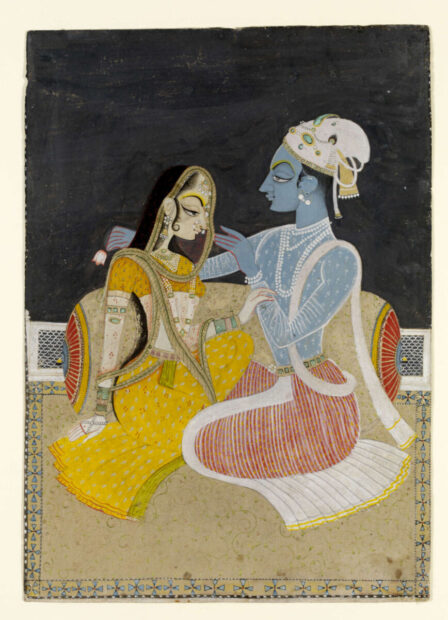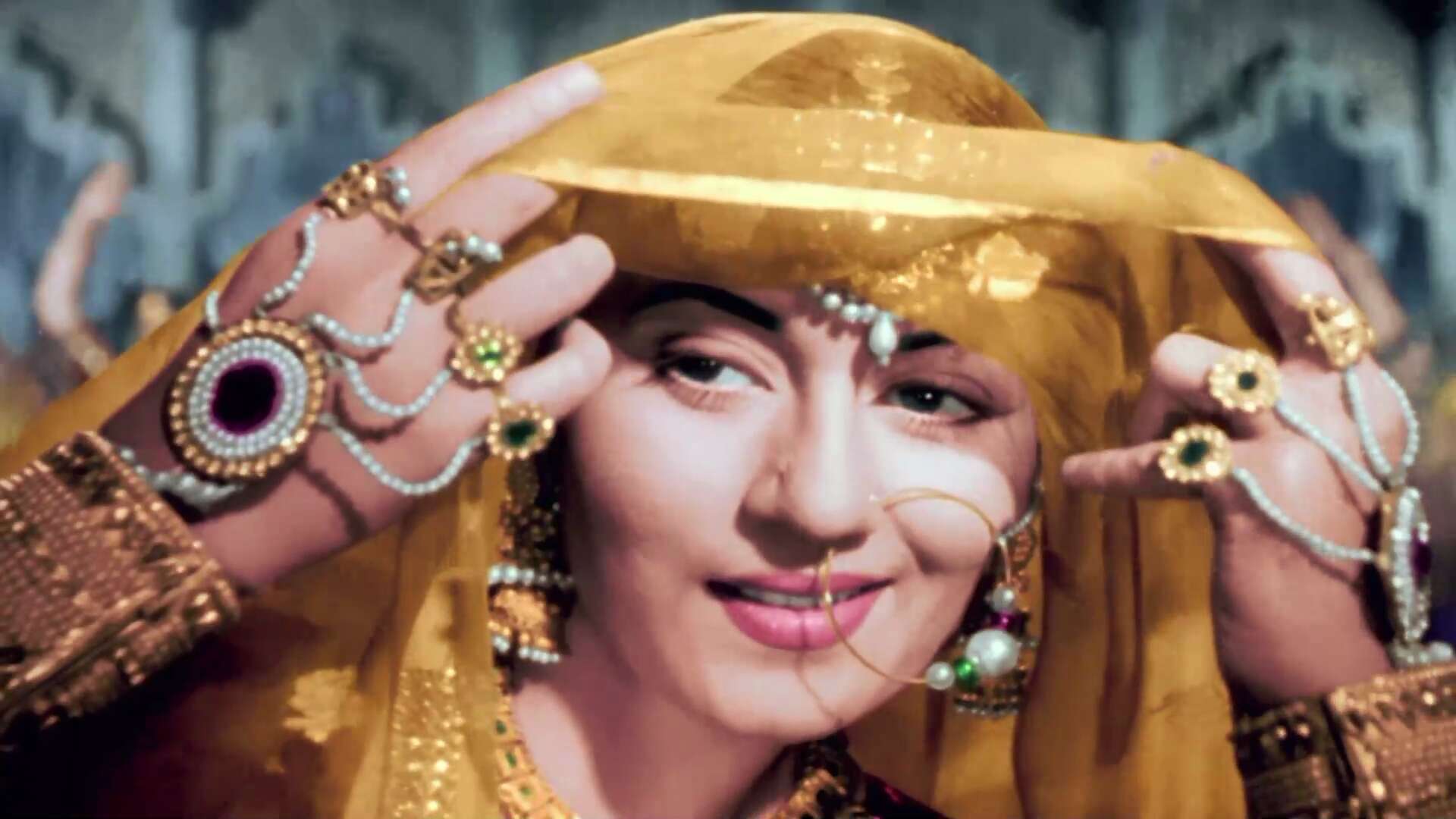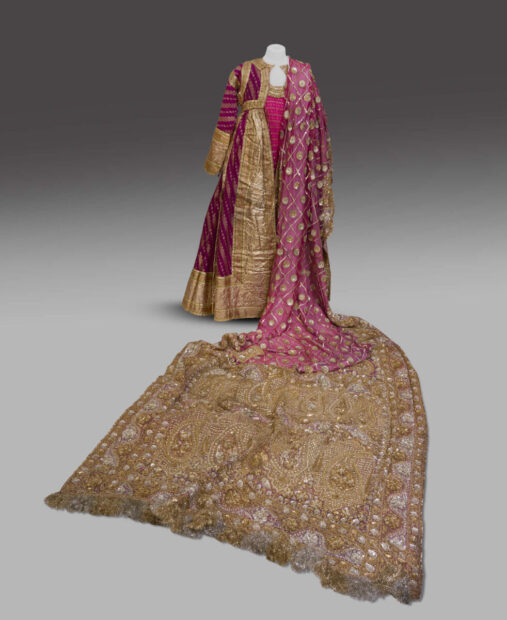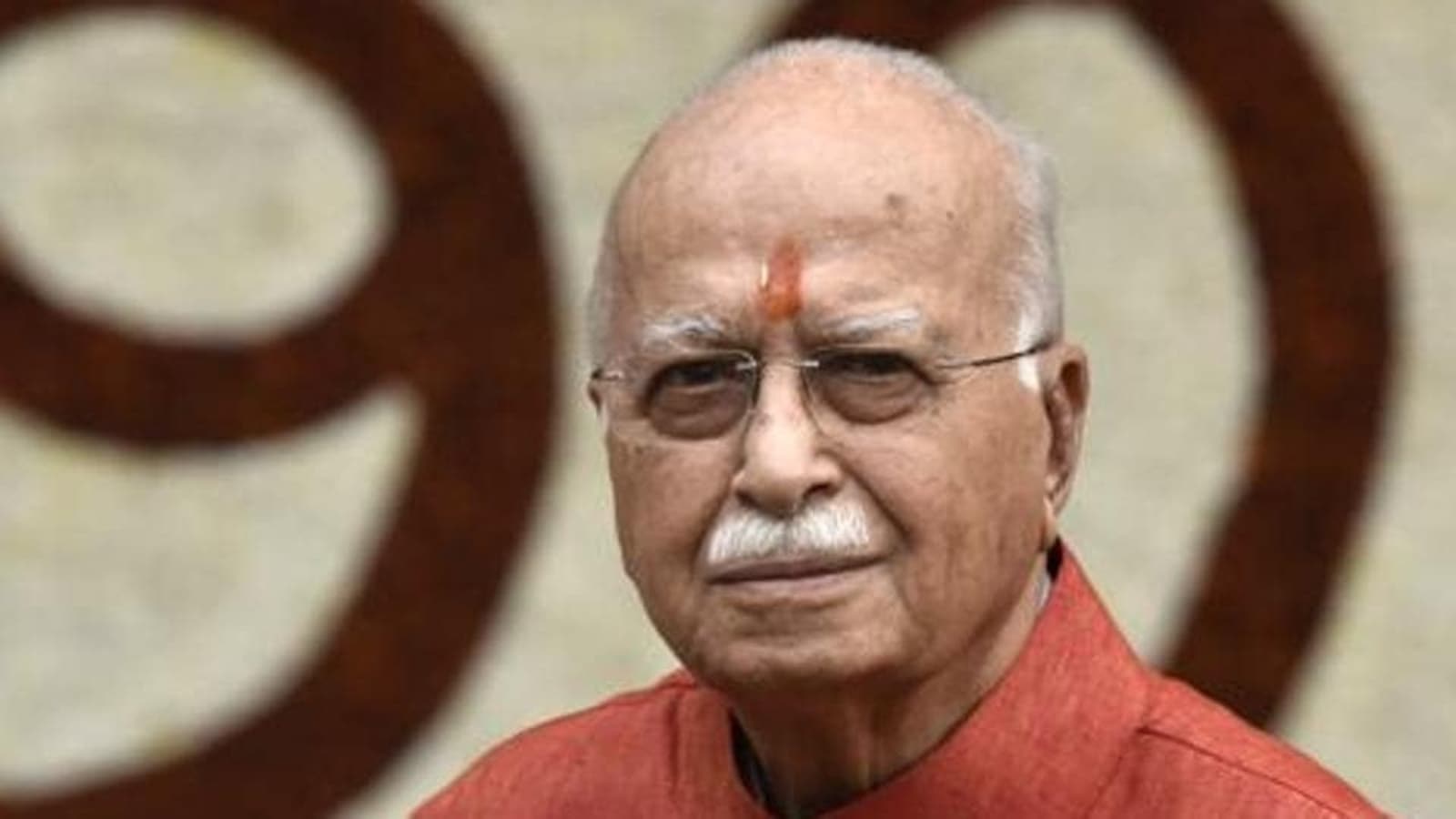Make way for fantasy in Paris where beautiful exhibitions take us into the behind-the-scenes music and images of Bollywood, the cinema capital of Bombay. Enough, without any long journey, to dream of beautiful things in other places.
By Bénédicte de Valicourt
Enough with the gray atmosphere and the bad news. Immerse yourself in Indian cinema at the Quai Branly in Paris which traces back, in a flamboyant exhibition, 100 years of the fantastical epics of Bollywood cinema and its blockbusters. It's cheerful, colorful, fun. Like Indian cinema and its feature films, a machine for realizing the dreams of all Indians, who regularly appear there from all age groups and origins.
Rama and Krishna's love
Bollywood
We pass through high arches colored red, orange or blue. And we travel between the love of Rama and Krishna under the beautiful moonlight where heroic battles were fought by the heroes of the Mahabhârata or Rāmāyaṇa, the epic that often forms the background of Indian films. Across a room, a young visitor dances for joy while contemplating his reflection duplicated on all sides in a room equipped with a set of mirrors inspired by cinema's kaleidoscopic dance scenes that display the characters and shooting angles. multiply. We see dancers from Bharatanatyam (southern India), Kathak (north India) and dances inspired by Rajasthani folklore, smiling with all their bright white teeth.
With over 1,500 films per year, India, 22 languages and many cultures, beliefs and customs, is today the world's leading producer of cinema, a production that has spanned over a century. Not only in Bollywood, one of the regional industries, but also in Tollywood, Mollywood or Kollywood, and many other very active production locations.

And it is the main attraction of this exhibition, with its humorous staging and museum pieces, glittering costumes and other paintings, statues and film footage to see, to return to these fantastic sources of popular entertainment, which also we learn, the real glue during the development of the Indian nation which had just been freed from British colonialism. In 1896, less than a year after the Lumière brothers' first screening in Paris, chalachitra (cinema) arrived in Bombay and quickly established itself as a new form of entertainment. Like representations of shadow theater, magic lanterns – some beautiful examples of which we can see in the exhibition – and itinerant storytellers that preceded and coexisted with cinema, these films were projected in traveling cinemas. They are inspired by the great gods and kings of ancient mythological stories.
A total spectacle
Since then, performances that combine theater, dance and music have become total. A worthy setting for “Arabian Nights”, cinema, a machine that literally filters out dreams and nothing too beautiful, quickly became a real “opium” for Indian society. Steeped in cultural references and adhering to a series of cleverly orchestrated visual codes, the films, conveying an idealized vision of India's past, quickly enjoyed enormous success, and moved audiences to the “single screen,” the criss-crossing temples of cinematic devotion. that region. Going to the cinema doesn't mean sitting in the dark and passively watching a film. We scream, we sing, we dance, we show our devotion to the stars who appear on the screen. They also became demi-gods or at least more than human. Because nothing is too beautiful to distract viewers from everyday life and make them forget the horrors of the human condition.
The only interlude in this riot of glittering costumes, dance and song is part of an exhibition dedicated to director Satyajit Ray, the auteur pope of Bengali cinema, who brought a social counterpoint to this riot of rhinestones and glitter wisely reminding us of that cinema India was not limited to the regional industries of Bombay.
Everything is charming and hypnotic like Bollywood.
do not miss This Sunday and every Sunday until January 14tha little journey into India in dance and music with Indian Arts Lab/mahina Khanum, in the museum gardens.
Quai Branly Museum. www.quaibranly.fr
More information on Magcentre: Pelletier-Troupet: extraordinary creations in the free arts

“Award-winning travel lover. Coffee specialist. Zombie guru. Twitter fan. Friendly social media nerd. Music fanatic.”








